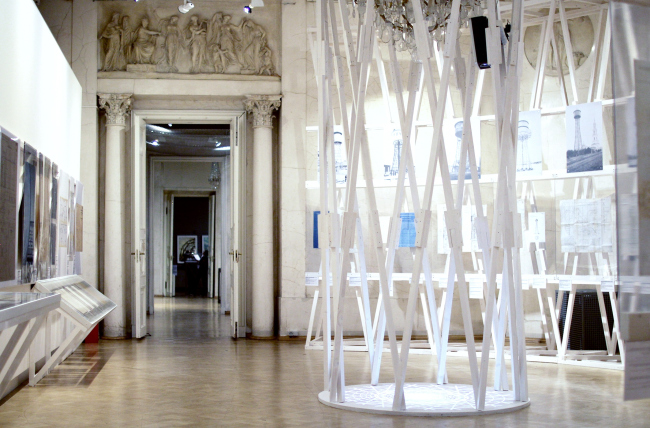|
Published on Archi.ru (https://archi.ru) |
|
| 20.11.2019 | |
|
The Stereo World of Engineer Shukhov |
|
|
Natalia Koriakovskaia |
|
|
Until January 19, the Museum of Architecture will host the retrospective exhibition featuring the legacy of the outstanding engineer Vladimir Shukhov – a symbiosis of tremendous research work and beautiful artistic metaphor created by ASSE Architects. Vladimir Shukhov is Russia’s most famous engineer of all times; he is our Russian Gustav Eiffel who is known throughout the world. In his inventions, Shukhov found himself on the threshold of a groundbreaking new system of interpreting buildings as “space shells”. The architecture of such buildings is essentially their structure. Shukhov is admired by many architects –because his input in the construction technology ensured a new degree of freedom in working with space and shape. This second, “architectural” genius of his, though, was only appreciated in the second half of the XX century, while his contemporaries more appreciated his developments of a purely practical nature. The lightweight innovative structures were rather simple to assemble, were cost effective material-wise, and were capable of spanning considerable amounts of floor space. Exhibition "Shukhov. Formula of Architecture". 2019, Museum of Architecture, MoscowCopyright: Photograph: Julia Tarabarina, Archi.ruShukhov’s inventions were also the fruit of their epoch, characterized by the rapid growth of industrial production and the ensuing development of engineering thought. This was the soil that gave birth to Shukhov’s genius. At the same time, the engineer’s path from industrial apparatuses for oil refinement to the architecture of railway terminals is symbolic of the evolution, or, as the curators of the exhibition (Elena Vlasova, Mark Akopyan) put it, “emancipation” of his constructions, which at the turn of the century made a leap to a whole new level. The systems were becoming lighter and more elegant, and at the Nizhny Novgorod fair 1896 were for the first time around showcased as self-sufficient “shells” of the buildings.  Exhibition "Shukhov. Formula of Architecture". 2019, Museum of Architecture, MoscowCopyright: Photograph: Julia Tarabarina, Archi.ru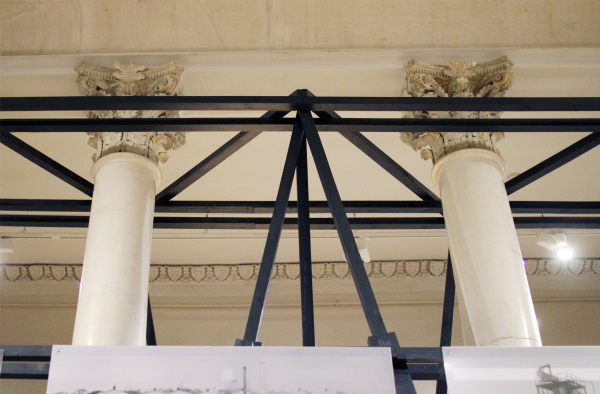 Exhibition "Shukhov. Formula of Architecture". 2019, Museum of Architecture, MoscowCopyright: Photograph: Julia Tarabarina, Archi.ru Exhibition "Shukhov. Formula of Architecture". 2019, Museum of Architecture, MoscowCopyright: Photograph: Julia Tarabarina, Archi.ru Exhibition "Shukhov. Formula of Architecture". 2019, Museum of Architecture, MoscowCopyright: Photograph: Julia Tarabarina, Archi.ru Exhibition "Shukhov. Formula of Architecture". 2019, Museum of Architecture, MoscowCopyright: Photograph: Julia Tarabarina, Archi.ru Exhibition "Shukhov. Formula of Architecture". 2019, Museum of Architecture, MoscowCopyright: Photograph: Julia Tarabarina, Archi.ru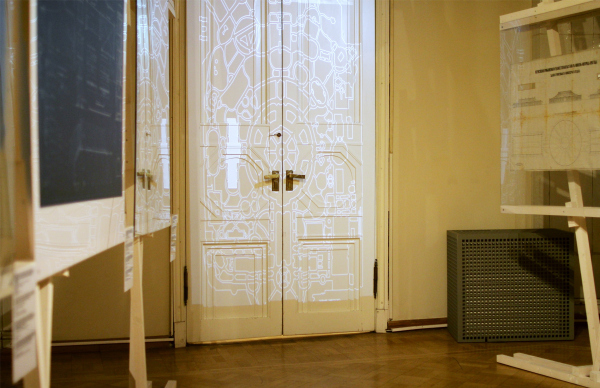 Exhibition "Shukhov. Formula of Architecture". 2019, Museum of Architecture, MoscowCopyright: Photograph: Julia Tarabarina, Archi.ru Exhibition "Shukhov. Formula of Architecture". 2019, Museum of Architecture, MoscowCopyright: Photograph: Julia Tarabarina, Archi.ru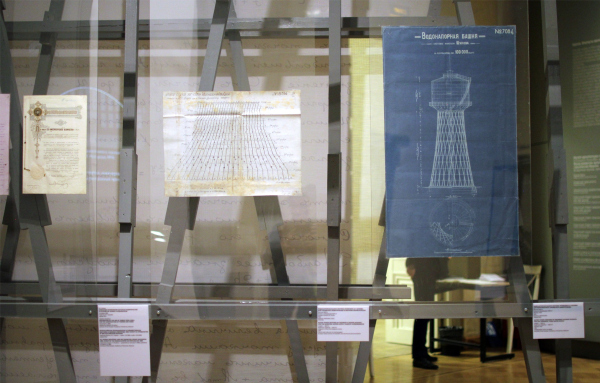 Exhibition "Shukhov. Formula of Architecture". 2019, Museum of Architecture, MoscowCopyright: Photograph: Julia Tarabarina, Archi.ru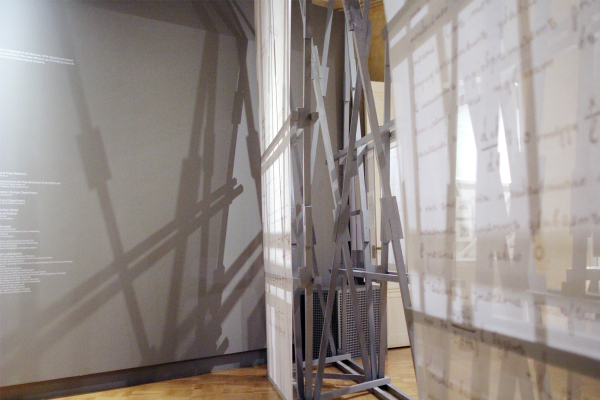 Exhibition "Shukhov. Formula of Architecture". 2019, Museum of Architecture, MoscowCopyright: Photograph: Julia Tarabarina, Archi.ru Exhibition "Shukhov. Formula of Architecture". 2019, Museum of Architecture, MoscowCopyright: Photograph: Julia Tarabarina, Archi.ruWhat was presented at the fair by the A.V.Bari engineering firm, where Shukhov worked up until the company was nationalized by the communist government in 1919, literally mesmerized the contemporaries. Probably, the effect was very much like that of Paxton Crystal Palace made of cast iron and glass that had been presented in Hyde Park half a century before. Looking like gigantic circus tents, the Oval Pavilion and the Rotunda demonstrated the possibilities provided by hanging steel meshes that covered more than a 1000 square meters of floor space. Assembled from straight rods, these shells were designed to take on strain and stretching. 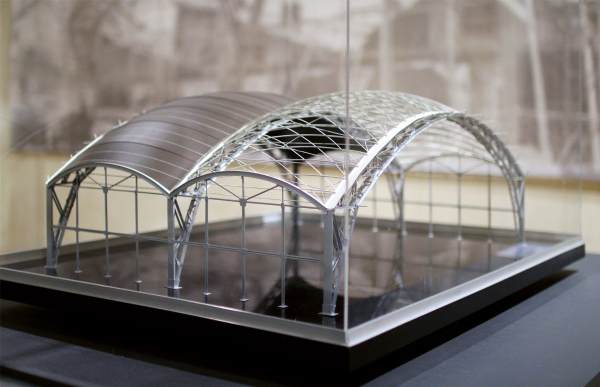 Vladimir Shukhov. Multiradius grid shells in the production facilities of the Vyksa metallurgic plant. 1897. Model by O.Bernov, 1989, Promstalkonstruktsiya research institute, model workshop. State Museum of Architecture. Exhibition "Shukhov. Formula of ACopyright: Photograph: Julia Tarabarina, Archi.ru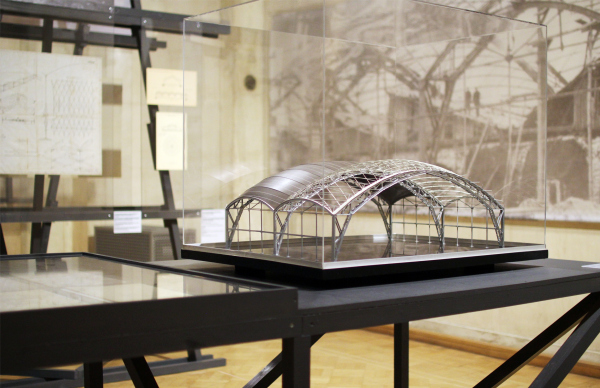 Vladimir Shukhov. Multiradius grid shells in the production facilities of the Vyksa metallurgic plant. 1897. Model by O.Bernov, 1989, Promstalkonstruktsiya research institute, model workshop. State Museum of Architecture. Exhibition "Shukhov. Formula of ACopyright: Photograph: Julia Tarabarina, Archi.ru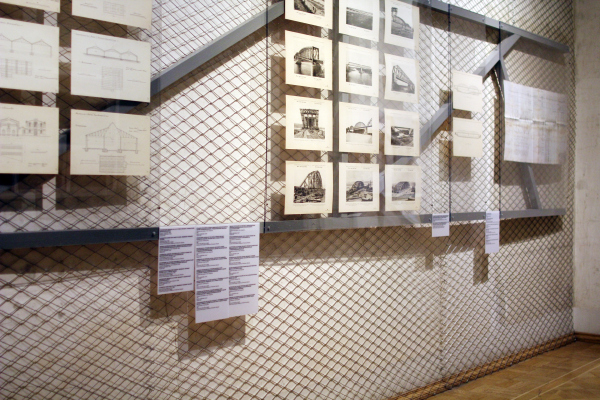 Exhibition "Shukhov. Formula of Architecture". 2019, Museum of Architecture, MoscowCopyright: Photograph: Julia Tarabarina, Archi.ru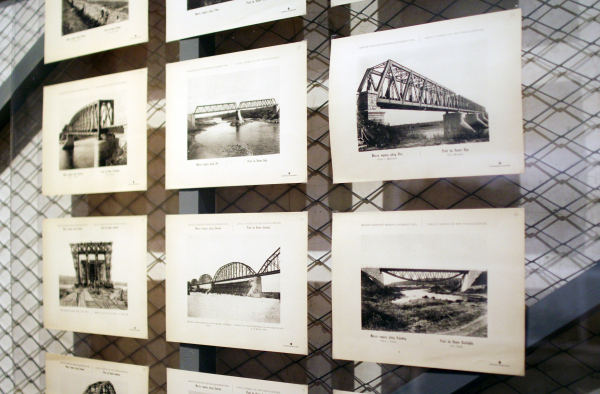 Exhibition "Shukhov. Formula of Architecture". 2019, Museum of Architecture, MoscowCopyright: Photograph: Julia Tarabarina, Archi.ru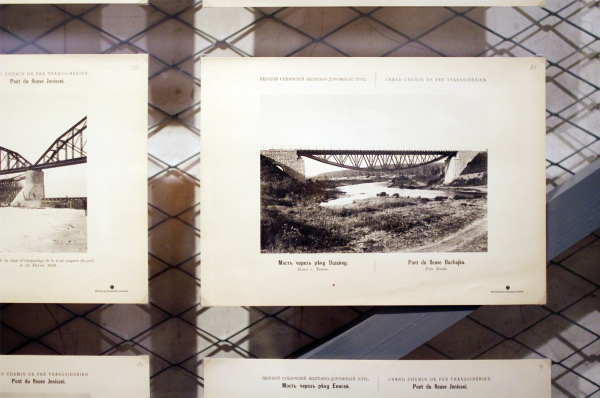 Exhibition "Shukhov. Formula of Architecture". 2019, Museum of Architecture, MoscowCopyright: Photograph: Julia Tarabarina, Archi.ru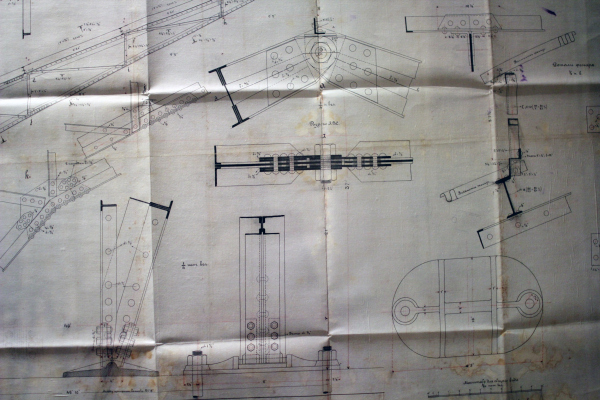 Exhibition "Shukhov. Formula of Architecture". 2019, Museum of Architecture, MoscowCopyright: Photograph: Julia Tarabarina, Archi.ru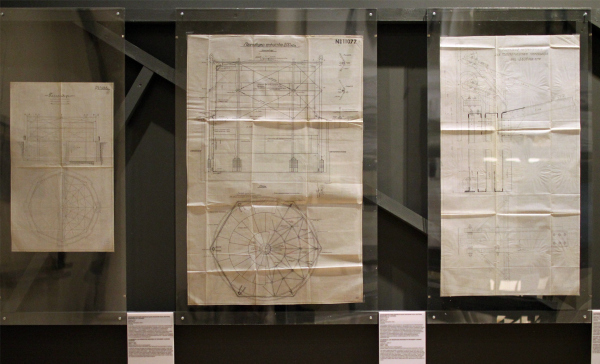 Exhibition "Shukhov. Formula of Architecture". 2019, Museum of Architecture, MoscowCopyright: Photograph: Julia Tarabarina, Archi.ru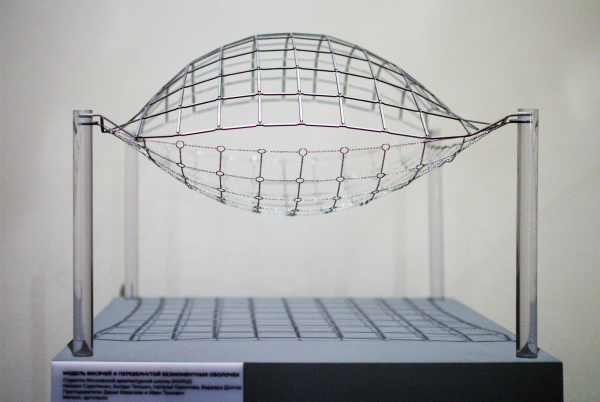 Exhibition "Shukhov. Formula of Architecture". 2019, Museum of Architecture, MoscowCopyright: Photograph: Julia Tarabarina, Archi.ruThe highlight of the fair was the hyperboloid water tower. Developed by Shukhov, its construction, as well as the method of its assembly, made the hyperboloid a universal multipurpose system for solving various tasks. Almost like in the Rem Koolhaas book “S, M, L, XL”, you only needed to set the right parameters of the construction that fitted your specific purpose. The variables were the height, the base diameter, the number of vertical elements, and their tilt angle. For example, making a structure tapering upwards, you could ensure extra stability at the expense of sacrificing some of the carrying capacity, and vice versa. Ultimately, Shukhov built quite a lot of such hyperboloids. The best-known is the Shabolovka tower; the highest is the Dnipro lighthouse 70 meters tall. The hall where all of the Shukhov towers come together to form a semblance of a pantheon must probably be considered to be the central one: in the middle there is a metaphorical model of the Shabolovka TV tower, surrounded by its brothers and sisters from various regions of Russia. Specifically for this hall, ASSE Architects made all of the expo structures white, which gives it some certain solemnity: this is the main representation of Shukhov’s legacy, who is first of all known as the designer of this tower. Exhibition "Shukhov. Formula of Architecture". 2019, Museum of Architecture, MoscowCopyright: Photograph: Julia Tarabarina, Archi.ruThanks to ASSE Architects, however, we do not for a second forget – starting from the first hall that welcomes us with physical experiments demonstrating the nature of grid shells – that we see Shukhov not only as an engineer but also as an architect. Following the historical sequence of events in his life, represented by a huge collection of archive materials, we eventually find ourselves in the last hall, face to face with architecture. It is here that we see the direct metaphor for the construction as creative activity: the central place is occupied by video art or the American engineer and innovator Conrad Waxmann, whose volumetric mathematical grid becomes a true work of art. It took mankind half a year to find purely architectural application for Shukhov’s inventions and truly appreciate their significance for the entire architectural profession. In the postwar period, when the country was to “build more and consume less”, the new architecture of shells replacing the facades developed into a whole independent branch. It also got a number of fans among the “star” architects, from Frei Otto to Norman Foster. In 1964, on the basis of Stuttgart University, there opened an Institute of Lightweight Structures, headed by professor Werner Sobek, who develops still further Shukhov’s ideas of hanging structures.  Exhibition "Shukhov. Formula of Architecture". 2019, Museum of Architecture, MoscowCopyright: Photograph: Julia Tarabarina, Archi.ru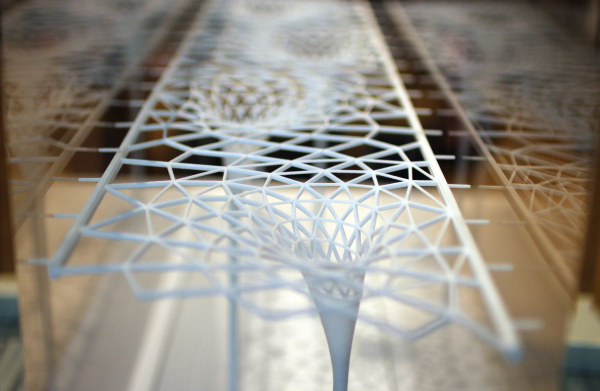 Model of the roof construction in Hamburg. 2013-2021. Plastic. Werner Sobek. Stuttgart. Exhibition "Shukhov. Formula of Architecture". 2019, Museum of Architecture, MoscowCopyright: Photograph: Julia Tarabarina, Archi.ru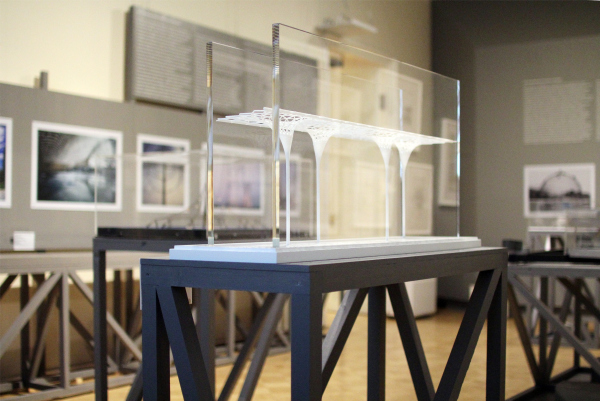 Model of the roof construction in Hamburg. 2013-2021. Plastic. Werner Sobek. Stuttgart. Exhibition "Shukhov. Formula of Architecture". 2019, Museum of Architecture, MoscowCopyright: Photograph: Julia Tarabarina, Archi.ru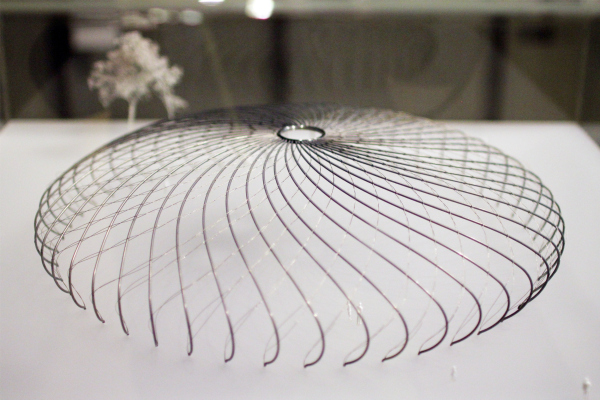 The dome model in Millenium Park, Chcago, USA. Werner Sobek, Stuttgart. Institute of Lightweight Constructions and Conceptual Design. 2019 // Exhibition "Shukhov. Formula of Architecture". 2019, Museum of Architecture, MoscowCopyright: Photograph: Julia Tarabarina, Archi.ru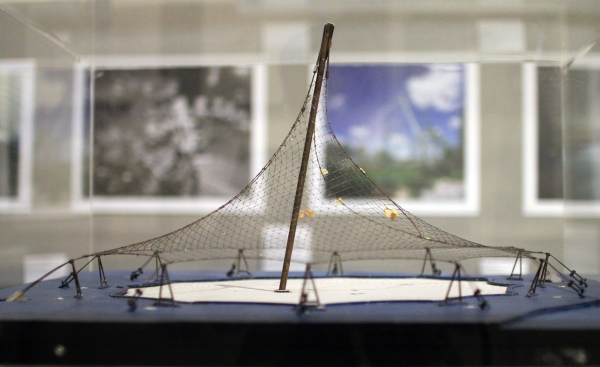 Exhibition "Shukhov. Formula of Architecture". 2019, Museum of Architecture, MoscowCopyright: Photograph: Julia Tarabarina, Archi.ru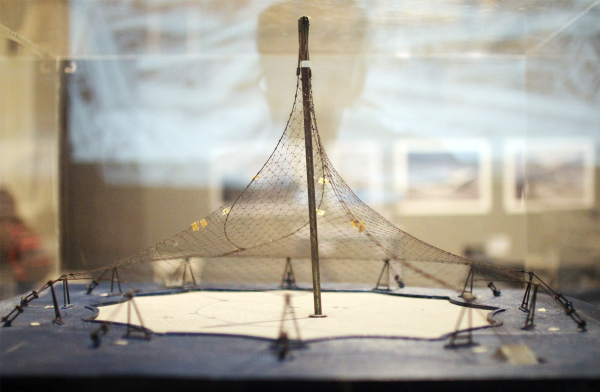 Model of the grid shell in the Institute of Lightweight Structures 1993/1995. The archive of the institute. Exhibition "Shukhov. Formula of Architecture". 2019, Museum of Architecture, MoscowCopyright: Photograph: Julia Tarabarina, Archi.ru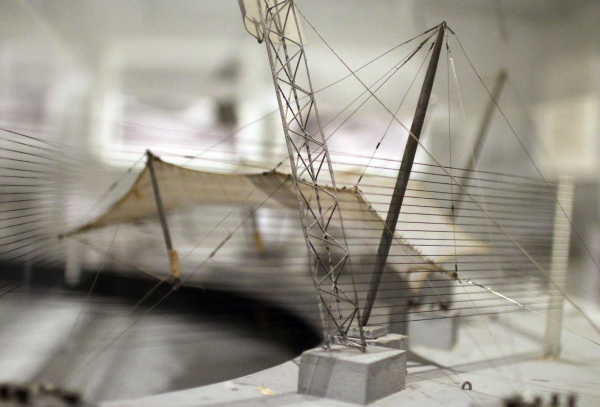 Exhibition "Shukhov. Formula of Architecture". 2019, Museum of Architecture, MoscowCopyright: Photograph: Julia Tarabarina, Archi.ru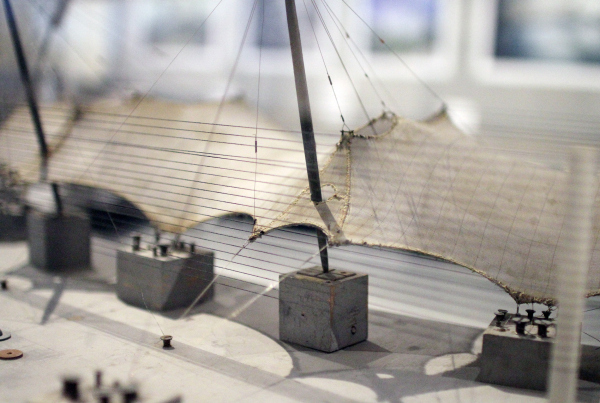 Exhibition "Shukhov. Formula of Architecture". 2019, Museum of Architecture, MoscowCopyright: Photograph: Julia Tarabarina, Archi.ruWhat is interesting is the fact that the topic of grid shells is still pretty innovative and even slightly futuristic in this day and age, its potential still far from being exhausted. In 1965-83, the genius Buckminster Fuller patented his geodesic domes or “climatrons”, which looked like some kind of energy efficient housing for the aliens. However, these were still to remain “the great fantasy”. Modern technology opens up new possibilities for further refinement, digitalization of the wall, down to the appearance of a media screen. This path indicated 100 years ago by the visionary Shukhov, the path of completely new logic of volumetric self expression. The exhibition in the Shchusev Museum throws an invisible little bridge that starts at the break of the XIX-XX century in the ominous pre-revolution atmosphere, expressed very accurately by the stereographies done by Shukhov himself, and stretches on to the eternity. |
|

